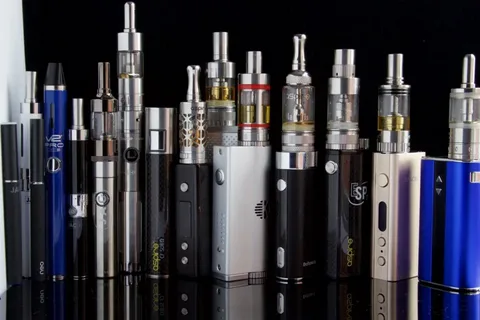E-cigarettes (also called vaporizers or vape pens) use a battery to heat liquid into an aerosol that users inhale. The e-liquid in these devices typically contains nicotine, propylene glycol, glycerin and flavorings.
These chemicals can damage the lungs. Some studies show that they also cause cancer and other diseases.
Nicotine
Nicotine is an addictive chemical that can cause health problems if consumed in large quantities. E-cigarettes (also called vaporizers, vapes or electronic nicotine delivery systems) use a cartridge containing e-liquid that is heated to produce aerosols, or vapor, that the user inhales. Depending on the device used, a person can inhale high levels of nicotine in an e-cigarette. E-cigarettes also may contain other chemicals and additives. In recent years, the use of e-cigarettes has skyrocketed among youth, leading to an “epidemic” of high school and middle school usage.
The e-liquid in an e-cigarette typically contains a mixture of compounds that can be vaporized, including glycerol and propylene glycol (1,2-propanediol), which act as humectants to keep the liquid from drying out. Exposure to e-cigarette vapor can negatively impact the lung, as it has been shown to lead to apoptosis and oxidative stress in respiratory epithelial cells. The vapor can also be irritating to the throat and mouth.
Flavors
Several studies show that e-cigarettes are popular with youth and that appealing flavors attract new users. In one study, 85% of youth e-cigarette users used flavored products and most of those were fruit, candy/desserts/other sweets, mint, or menthol flavors. This finding supports the need for stricter restrictions on e-liquid flavor marketing and usage.
The e-liquid landscape is huge and characterized by a wide variety of flavour descriptions. This abundance of e-liquid flavours is concerning, especially given the high prevalence of e-cigarette use among youth. In addition, several of these flavourings are known to be toxic to human airway epithelial cells.
This study retrieved the landscape of e-liquids advertised online and classified them by their flavour description. It categorized them into 16 main categories and a number of subcategories. These classifications are based on the manufacturer’s information about their products and are consistent with flavour preferences described in literature. The results showed that the most common e-liquid flavors are fruits and desserts, but also include coffee, tea, drinks, candies, and menthols.
Safety
Inhaling the vapor produced by an e-cigarette (electronic nicotine delivery systems or ENDS) can expose the lungs to harmful chemicals. These vapors contain nicotine, flavourings and additives that can harm health.
E-cigarettes use a battery to heat liquid into aerosols that users inhale. These vapors usually contain nicotine, but some e-cigarettes also have non-nicotine flavourings and additives. The food and drug administration regulates these products and requires them to be labelled. Unfortunately, e-cigarette labeling is not always accurate.
Many people believe that e-cigarettes are safer than regular cigarettes because they do not produce any of the harmful byproducts of combustion. However, this claim is based on incomplete research and ignores the fact that e-cigarettes are not risk-free. In addition, a study showed that the vapor produced by an e-cigarette contains humectants such as PG and vegetable glycerine, which can irritate the respiratory tract. Another study found that e-cigarettes can cause cytotoxicity and oxidative stress in human gingival fibroblasts.
Regulation
E-cigarettes (e-cigs, vaporizers or vapes) are a type of electronic nicotine delivery system that delivers a flavored aerosolized solution or liquid. They are marketed in a wide range of appealing flavors and appear to be attracting youth who may not have previously used tobacco products. In addition to their nicotine content, e-liquids contain delivery solvents like propylene glycol and pulegone, which can cause dry mouth and throat and upper respiratory irritation, as well as chemicals such as carcinogens and toxicants that have been linked to other health issues.
Companies promote their e-cigarettes with online ads and social media, including branded accounts that are accessible by the public that include pictures of celebrities who endorse their product. E-cigarette brands are also able to use experiential marketing in places like malls, parks and beaches to directly interact with customers. As more time passes since these products were introduced to the market, we learn more about their potential impacts on health. One recent study found that creme brulee-flavor e-cigarette aerosol was cytotoxic to human lung epithelial cells and induced ROS production.電子煙




